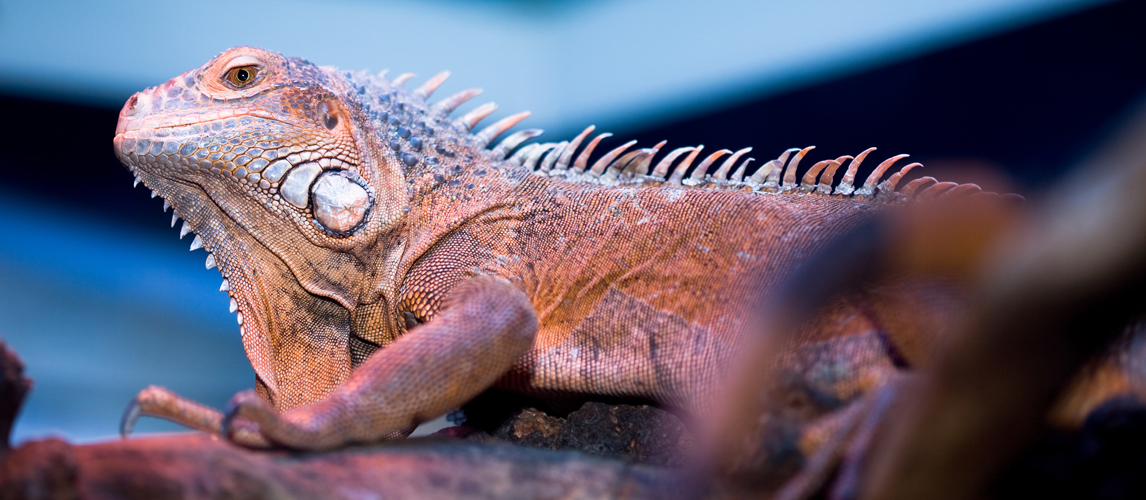
The Best Reptile Incubators in 2022
- Home
- Other animals
- Reptiles
If you’re starting out on the journey of helping to nurture new life, having the best reptile incubator to hand is an absolute necessity. Below, we’ve scoured the internet for the most effective, flexible and successful incubators to provide our readers with a list of the best eggs incubator for your needs.
Better still, our buying guide tells you everything you need or want to know about buying a reptile egg incubator, as well as giving you the answers to those frequently asked questions. So, read on to go from an egg incubating rookie to arming yourself with all the knowledge you could possibly require to successfully create new life in your snake egg incubator.
The Best Reptile Incubator
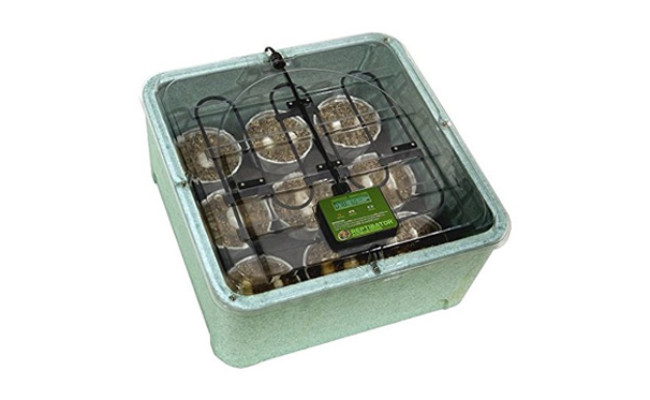
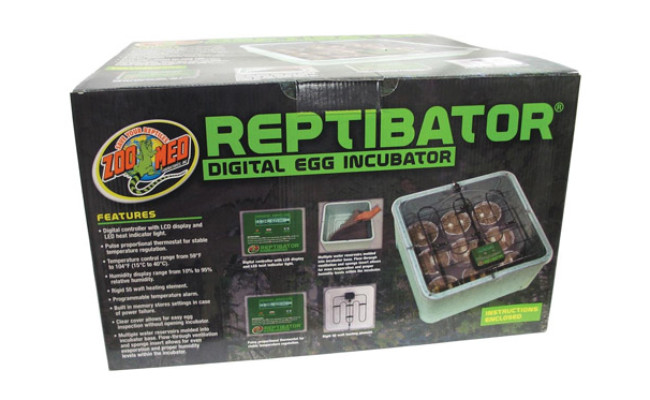


The Zoo Med ReptiBator features digital controls to operate an LED display and heat indicator light. With a built-in memory, the temperature control is programmable and features an alarm for peace of mind. This works brilliantly as insurance in case of a power outage!
The humidity control ranges between 10 and 95% humidity and multiple water reservoirs are built into the base, helping to maintain correct humidity levels within the incubator – a key factor to a successful hatch. Meanwhile, the flow-through ventilation and sponge inserts help maintain an even evaporation, while a clear cover means there is no need to open the incubator for inspection.
This economical and effective reptile egg incubator gives breeders complete temperature and humidity control for their developing eggs. It is great for the hobbyist or for the small breeder with one or two clutches a year. For the price, this is- in our humble opinion- the best eggs incubator, especially as the Zoo Med ReptiBator incubator comes with a warranty for one year.
Easy to use temperature control
Digital LCD controller
Humidity display
- Brand: Zoo Med
- Model: RI10
- Weight: 4.41 pounds
Great at maintaining a mini climate that is ideal for incubating eggs
Holds temperature and humidity well
Gauges can be off by a few degrees
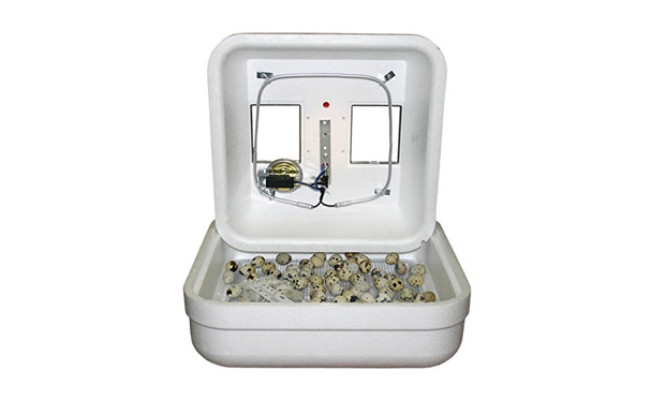
Recognized as the world’s best small incubator for over thirty years, the Hova-Bator 1602N model is the most efficient and economical incubator available and it can be safely used for both reptiles and poultry such as chickens, turkeys, quail, ducks, guinea fowl, etc.
We love the thermal airflow model, in which fresh air is drawn through the bottom vent of the incubator whilst the heated air flows out of the exhaust vents on the top of the unit. On its way through, this airflow helps to dry the newly hatched chicks (Note, if you are hatching poultry eggs they will need to be rotated).
The wafer thermostat gives accurate readings and overall this incubator produces great hatch results, while the two small windows on top of the incubator allows easy viewing of the eggs and hatchlings without removing the lid, thus keeping both humidity and temperature stable. It works well, is easy to use and is easy to clean after a hatch. This incubator maintains more constant humidity and temperature than other similar sized incubators- and for that reason, it hits our Top Pick at the second spot.
Uses thermal air flow to maintain temperature
Small viewing windows to check on the eggs
- Brand: G.Q.F.
- Model: 813927021238
- Weight: 1.18 pounds
A very economical option
Widely used and highly rated
Doesn’t come with any way to cool the eggs
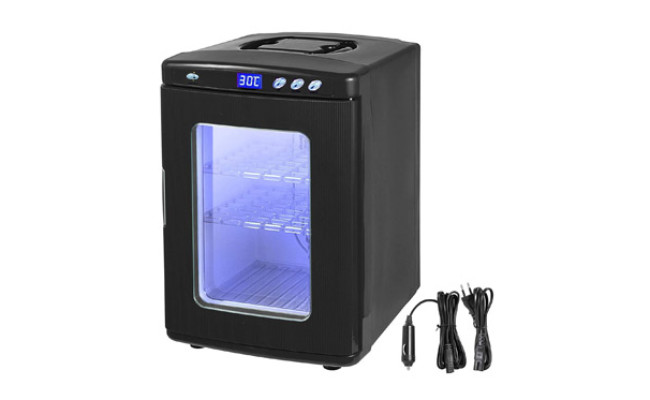
A great choice for the general incubation of eggs, but also a great choice if you need transport for your pets. This option works well as a portable incubator, while also holding a higher capacity. This makes it one of the most flexible choices on our list.
The temperature is easy to control, using the thermostat and this can be seen on the LED screen, on the front of the incubator. However, some users have commented that the temperature can be a little unreliable. However, this can be due to the display reverting to Celsius-only readings.
LED display
25l capacity
13 x 15.1 x 19 inches
Adjustable temp 5°C to 60°C
- Brand: HappyBuy
- Model: Black
- Weight: 18.5 Pounds
Highly portable despite a larger capacity
Ideal for transporting reptiles and amphibians
Easy to control temperature settings
Provides temperatures in Celsius-only
Thermostat can be unreliable
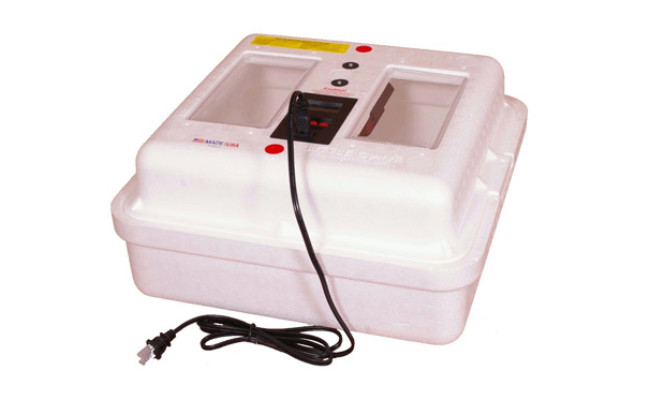
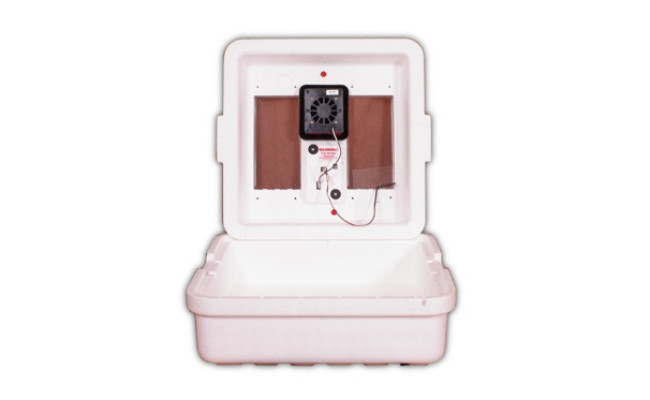


The Little Giant 9300 is the perfect incubator kit for incubating your reptiles. A built-in, easy to adjust, digital electronic thermostat has an LCD display with temperature and humidity readout and controls the temperature ensuring the optimum incubating environment. Moisture rings, built into the incubator, allow the easy top-up of water so that humidity can be maintained. Meanwhile, air inside of the incubator is gently warmed by a radiant heat tube and the heated air then flows out of the exhaust vents in the top of the incubator.
This thermal air flow helps provide great incubation conditions for reptile eggs and the Styrofoam manufacture helps hold in the heat. The eggs are safely supported by a washable, plastic mesh screen and can be viewed through two 4-inch x 8-inch windows. Higher side walls feature helps prevent hatchling escapes through the top vents or when the lid is removed. A great kit designed to help the hobbyist or small breeder get started.
Includes pre-punched cups with lids and substrate
Ideal for reptile eggs
Easy to regulate with the LCD display
- Brand: Incubator Warehouse
- Model: LGRK
- Weight: 5.25 pounds
Everything you need to hatch your eggs
Perfectly controlled humidity and temperature
Needs to be placed in a room temperature between 65-72-degree Fahrenheit
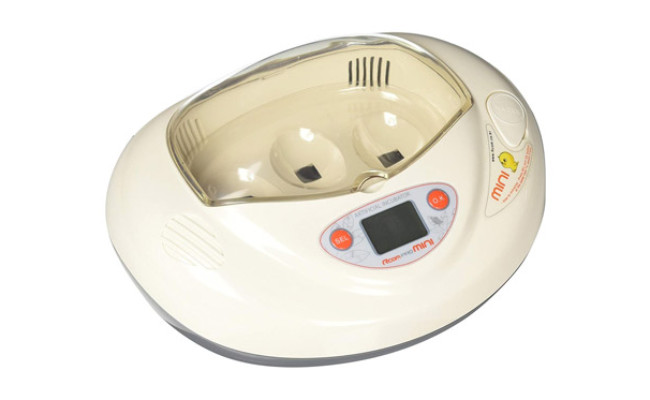
This is a great incubator for educational purposes and is very easy to set up and use. Designed in Korea, the Rcom Mini Incubator is menu driven and detailed instructions are supplied helping to guide you through the do’s and don’ts. Following the instructions, three hen-sized eggs can be watched through the fascinating incubating and hatching stages.
To begin, simply choose between the setting options of chicken, pheasant, quail, duck or even a mystery bird. The micro-controller will then select the correct criteria for the egg incubation, so no need to identify temperature, turning or incubation length.
The eggs are turned automatically and warmed gently for perfect incubation conditions, but you will need to check on the water levels in the unit and top up occasionally to keep to the correct humidity. Don’t forget the featured display counts down each day to show when the eggs are due to hatch and the turning will stop, again automatically, two days before the expected day of hatching. This incubator tends to keep a nice humidity percentage which can be the most difficult part for brooders, so this is a great choice for beginners.
Uses an auto-turn feature that stops 2 days prior to hatching
Perfect for poultry eggs
Countdown timer displays on LCD screen
- Brand: Unknown
- Model: FBA_R-Com Mini
- Weight: 3 pounds
A very simple interface is so easy to use
Automatically turns eggs while incubating
Can only fit up to three eggs
Not ideal for eggs that require precise measurements
Breaks easily during shipping
How to Choose the Best Reptile Incubators
Size
Naturally, the size is going to make a huge difference in how many eggs you’re able to incubate, but it’s also important for fitting into your home. Too large and you’ll find yourself struggling to get around without banging into your snake egg incubator, too small and you won’t be able to hatch as many eggs as you need or want. The size is also important in matching the size of the eggs you’re after incubating.
Check out the dimensions of the item before you buy, so you can be sure your new incubator will fit into your life, as well as being able to fit the reptile egg incubator in with the size of the life you’re looking to create!
Humidity
Each egg type will need to have an ideal humidity that ensures the health of the baby as the reptile egg incubator does its job. This works in tandem with the heat, so you’ll likely find a snake egg incubator that excels at both of these, at once.
How effective each type will be is another story- not every snake incubator has a great range of humidity or can lose some of the humidity through gaps in the lizard egg incubator itself. Look for an incubator that has good sealant around the openings and is suited to the right eggs- bird egg incubators need less humidity, for example.
Heat
Working in tandem with humidity, the right level of heat is essential for allowing your clutch of reptile eggs to hatch happily and healthily. Each species will have its own best temperature in order to thrive in your incubator, so check that your lizard egg incubator will reach the required temperature of your eggs before buying.
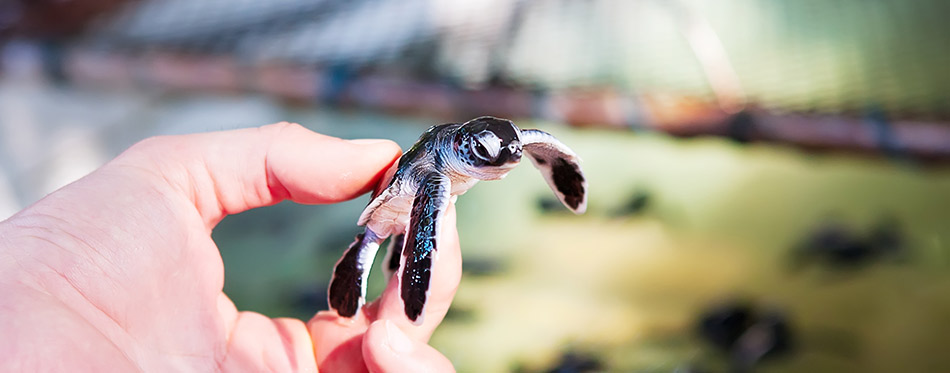
Features
These may not be absolutely essential to incubating your reptile eggs but they’re certainly a great way of keeping your own mental well-being sound as you go through the trials and tribulations of creating new life. The benefits of not handling your eggs aren’t entirely conclusive, so these are essential features to have- although they do make it less likely that any accidents will occur during the incubation period.
Don’t worry about trying to get the very best if you don’t feel you need it and are happy to go without some of the nicer features. It’s simply a case that having a user-friendly design will help you to keep an eye on your eggs and might even make the whole experience all the easier.
For example, viewing windows allow you to keep an eye on your eggs as they go through their gestation and let you check on your eggs without having to open the door every day- so there’s no risk of any lost heat or humidity which can cause those new lives to falter during their incubation period.
Similarly, some egg incubators come with automatic turners- again, this will ensure that you won’t need to keep opening and closing the door of your incubator. Bear in mind, however, that the more moving parts you have in your reptile egg incubator, the more likely they are to break. Check to see if there are any available parts and pieces that you can buy, quickly, should you need them.
You can also buy a spare- so, if something goes wrong, you can quickly transfer the eggs to their new incubator without hassle. Naturally, this is only recommended if the incubator itself is cheap enough to justify spending double the amount in order to purchase a spare.
Design
There are two main designs of snake egg incubators: upright and chest. The upright design looks somewhat like a mini-fridge and usually comes with a larger viewing window, which is a nice benefit to have if you’re looking to go for regular clutches of eggs. Meanwhile, the chest design can look a little like Tupperware, since it’s essentially a ceiling-facing opening that allows you to look down into the eggs. Other than that, there’s no major difference in how they look or act.
In terms of viability and the increased likelihood of hatching, there has been no study to indicate whether chest or upright incubators are better than the other since the results all varied massively between each group. So, essentially it all comes down to a personal choice and what you are more comfortable with buying and trusting with your reptile eggs.
Reviews
Reviews are easily the best and most accurate way of telling whether the product you’re getting is of a high standard, or whether you’re purchasing an item with low-quality parts. They can even let you know if you’re likely to get a faulty batch or if there has been a regular issue with the item in the same area, as well as what to look out for.
They’re also an absolute gold mine for hints and tips as to how to successfully incubate your clutches of eggs, as you can usually find plenty of veterans in the review section of each item. So, take your time and read through the responses carefully- we always list some of the best-rated items for this exact reason.

Best Reptile Incubator FAQ:
Q: What do I need in an incubator?
A: Having the incubator itself is just the start. In order to successfully incubate your clutches of eggs into hatchlings, you’ll need to arm yourself with the following:
- Substrate
This is the base that your eggs will be placed on and is key to helping to maintain a good level of moisture both in the air and for the eggs themselves. They’re also a good way of keeping the eggs stable, with less risk of them rolling around or attaching to each other (a common occurrence in egg incubation).
- Temperature
Remember that reptiles are cold-blooded animals, and they get their heat entirely from outside sources- and this is no different during the incubation period. If you want to produce healthy reptiles, then maintaining the right temperature is absolutely key- too low and they can’t incubate, too high and you will just end up cooking your poor reptiles.
One fun fact about reptile incubation is that the level of temperature can actually affect the sex of the reptile that is borne from that clutch of eggs. Having lower temperatures can indicate a stronger chance of females being born in some species, while those who are incubated in higher temperatures might be more likely to be males.
In leopard geckos, if you incubate between 92- and 94-degrees Fahrenheit, you might find yourself with an irritable, infertile female- also referred to as “hot females”. So, as you can see, having the right temperature is a pretty big deal!
- Humidity
Lizard eggs breathe and sweat through the pores of the shell and having the right level of humidity in your reptile egg incubator helps them to do this. However, if you provide too much moisture, there is a higher risk of dangerous molds and bacteria developing in your incubator.
Therefore, the best level of humidity for your eggs is a solid 75%, which will ensure they are neither too dry, nor too wet- and they’ll be able to perspire and aspire easily and freely. Anything below 50% will be dangerously dry and can cause your eggs to suffocate, while above 85-90% increases the likelihood of dangerous bacteria growth and cause your eggs to fail before having a chance to hatch.
Q: Can I use a chicken incubator for reptile eggs?
A: Providing your chicken incubator has the ability to handle the temperature and humidity required for your reptile eggs, there is absolutely no reason why a chicken incubator can’t be used as a reptile incubator. Check the guidelines of your species-specific hatching requirements and see if they match up with your preferred purchase before buying, to ensure a happy, healthy clutch of eggs.
Q: Do reptile eggs need to be kept warm?
A: The level of heat required for your reptile eggs depends on the species of the clutch of eggs you’re looking to hatch. The general rule of thumb is to create an environment between 70- and 92-degrees Fahrenheit- although you should always defer to your species-specific guidelines.
There are also some interesting theories on how the different temperature ranges can affect the gender of the reptiles you’re looking to hatch. More details about Temperature Sex Determination, or TSD, is given in the “What Do I Need In An Incubator?” section, above.
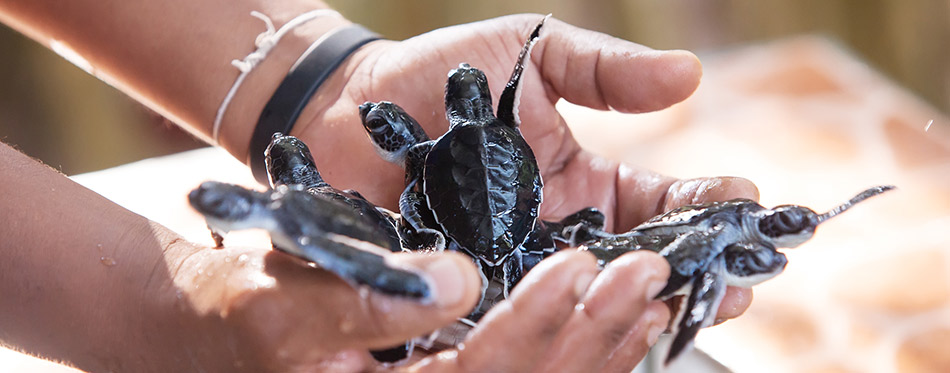
Our Top Pick
The Digital Reptile Egg Incubator from ZooMed hit our top spot thanks to a simple, easy-to-use design that comes with everything you could possibly need or want from a reptile egg incubator. With its chest design and lightweight but effective materials, this is perfect for those who want an open, easy viewing space and complete control over the heat and humidity of the egg’s environment.
The high-quality display allows you to see what’s going on at all times, while the simple thermostat has a surprisingly wide range of temperatures, which makes it a great choice for many different types of reptile eggs. Meanwhile, the humidity indicator keeps the message simple and clear as to when you need more or less within the incubator itself. All-in-all, this is a fantastic, cost-effective choice for beginners and veterans alike.
A freelance writer and word nerd, Wendy is a content writer with a knack for getting into the nitty-gritty of pet ownership. For the past three years, she’s been researching and writing a huge range of different topics – but always comes back to her beloved pet articles. Lover of all things four-legged and owner of Harley, Pepper and Rush, Wendy is currently completing her MNSW at Edge Hill University.
Related Posts



